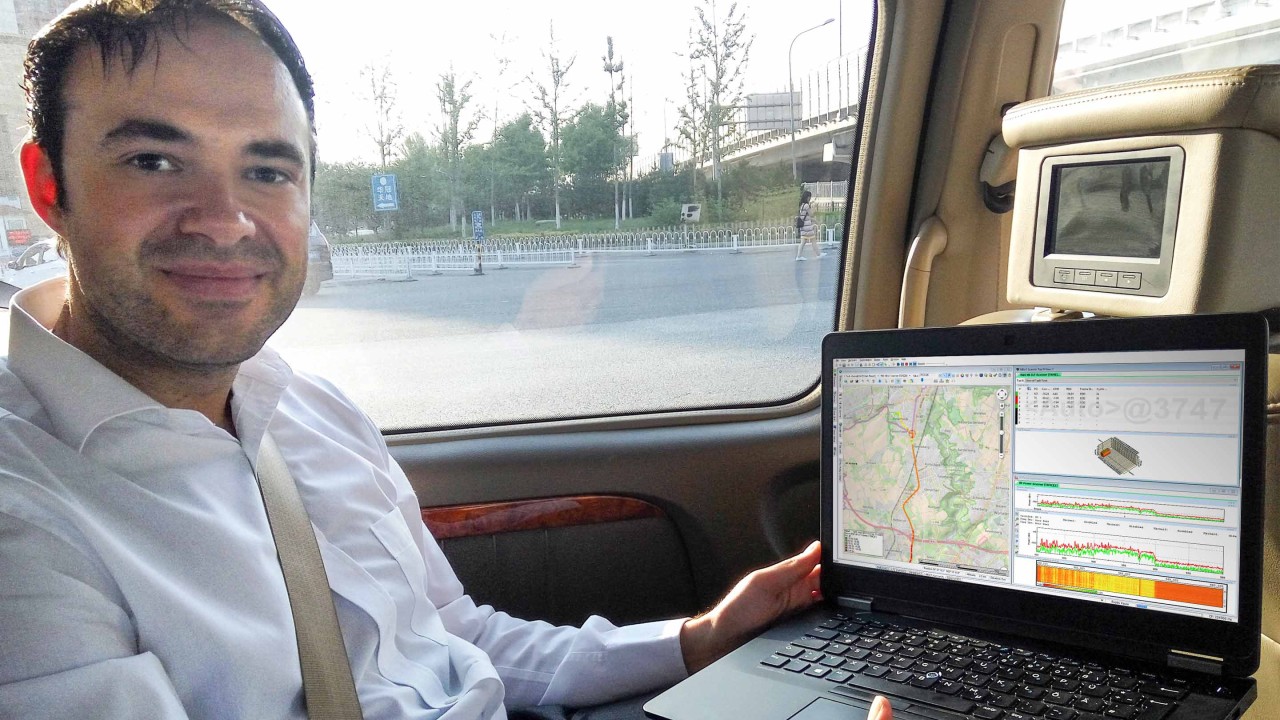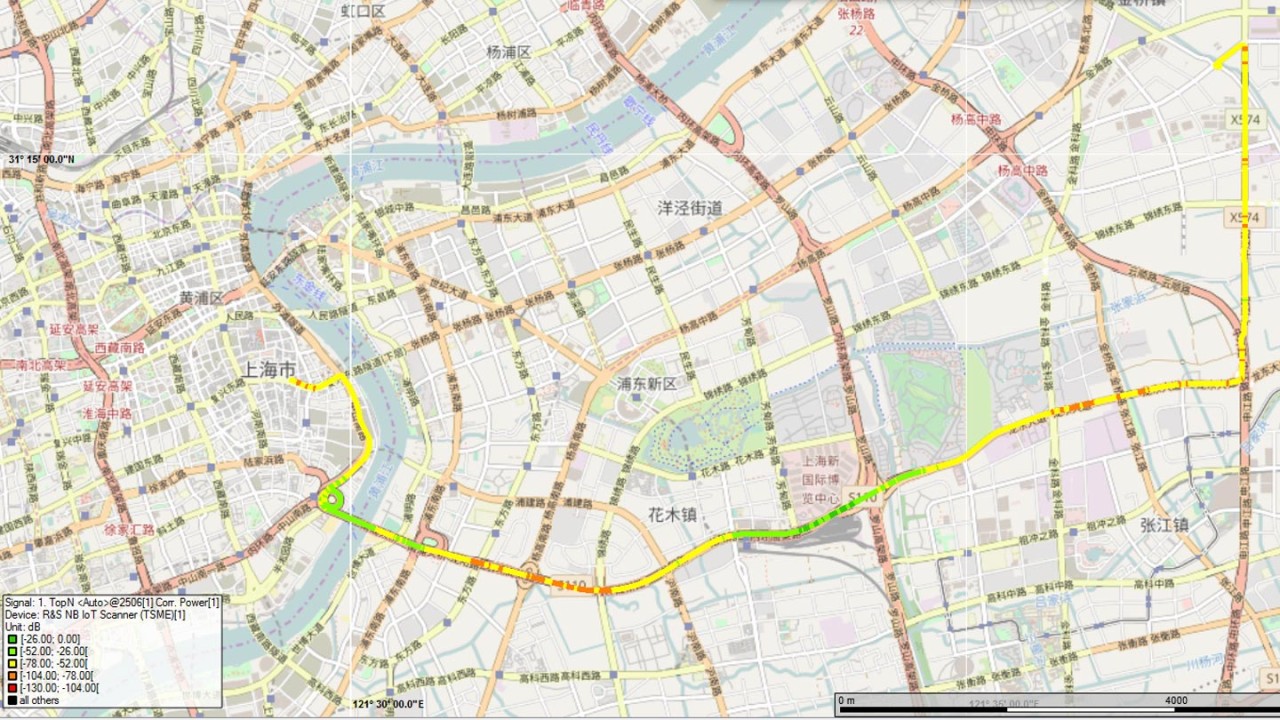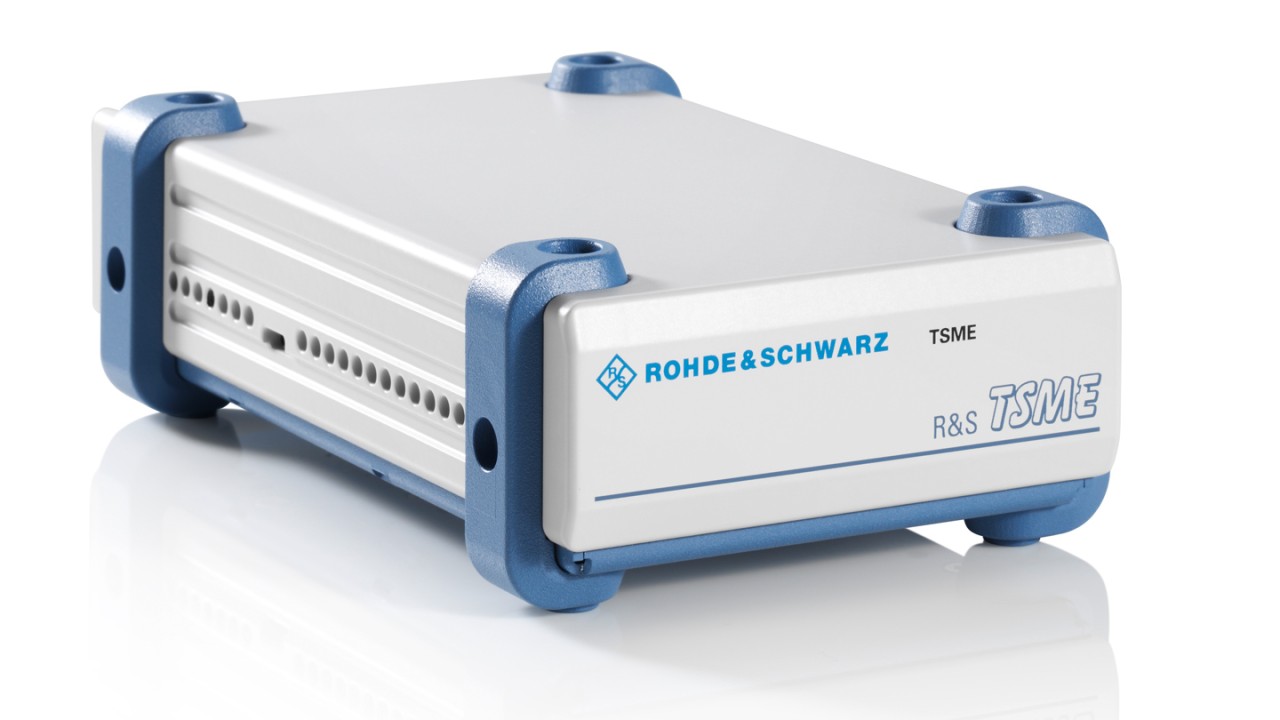Written by Manuel Mielke | July 20, 2017


There are different means to measure network coverage: active and passive. To identify if an NB-IoT service is provided by the network, simply turn on your NB-IoT user equipment. If it can find a serving cell, then service is provided, and the RF coverage can be measured. However, NB-IoT user equipment is limited in mobility, and the measurement results are therefore bound to be incomplete, if not inconclusive. We call this approach active because it interacts with the NB-IoT network. A valid subscription for NB-IoT services and a SIM card are required for active NB-IoT coverage measurements.
Scanners for accuracy and true coverage information
A much more accurate and reliable means of network coverage identification is a network scanner. The radio receiver is a passive device that captures the measurement data directly from the RF air interface. Instead of limiting measurements to one particular operator’s cell via a serving cell selection procedure, the passive scanner-based approach enables the capture of data from all operators and all available cells in an NB-IoT network.
The most significant parameters include power levels and signal-to-noise ratios of the different signals in the NB-IoT radio frame. Those parameters allow drawing conclusions about the RF conditions at a certain location, which provide the basis for network access through NB-IoT devices.
Scanner information is crucial for key tasks
A scanner is the only tool that can provide real coverage information. This information is crucial for completing three main tasks:
Network planing: Particularly in the early phases of an NB-IoT rollout, network planning tools need to “learn” so as to be optimally tuned to provide reliable planning data.
Troubleshooting: In general, if network performance is low (QoS), then troubleshooting helps to identify the root cause. With NB-IoT, however, troubleshooting reaches a new level of complexity. Say, the connection to a network device is lost or goes through retransmission. While troubleshooting, RF conditions will be given priority.
For example, finding an interference source requires an in-depth investigation of other technologies located closely within the spectrum. With the multi-technology capability of scanners, other technologies, such as GSM, (W)CDMA, or LTE, that have an impact on NB-IoT networks can be evaluated.
Especially in-band and guard-band operation mode, often used for efficiently implementing the NB-IoT signal into the spectrum, lead to spectrum constellations without any gaps or guard-bands between the NB-IoT carrier and the available LTE air interface (i.e., physical resource blocks). Consequently, interference with adjacent LTE resource blocks must be taken into account.
Benchmarking: Benchmarking is an essential task in testing mobile networks. Just like any other mobile network, also NB-IoT networks from different operators should be compared and evaluated to find the best NB-IoT coverage for certain regions. With the limitations of NB-IoT user equipment in mind, it becomes obvious that only network scanners command the completion of such demanding tasks. Connection reliability is more critical for NB-IoT than for LTE. Because unlike human beings, a smart meter in a below-ground indoor environment cannot change position and search for better coverage.
Why coverage measurements with user equipment are insufficient
As discussed earlier, user equipment-based measurements are active, requiring access to an operators’ NB-IoT network services using valid subscriptions. Compared to scanner measurements, they are limited, and hence inconclusive. The reason being that NB-IoT user equipment does not support full mobility as we are used to in legacy LTE.
To reduce the complexity and cost of NB-IoT chipsets, 3GPP has limited the mobility to idle mode only with cell reselection measurements. This means that neighbor cell measurements can only occur in idle mode, and once the NB-IoT device is in connected mode, it stops searching for neighbored cells.
Once connected to a cell and actively transferring data, the NB-IoT user equipment will remain on this particular cell until the connection is lost while driving. After that, the NB-IoT user equipment will start searching for a better cell and initiate cell reselection. Since NB-IoT user equipment cannot measure signals from more than the serving cell in connected mode, a better signal than the current one will not be recognized.
As a result, user equipment-based measurements are limited to one specific network and impaired by different behaviors and by the test script sequence influence on the connection state. Drive tests conducted with NB-IoT user equipment doing active data transfers miss a certain amount of data during the segments in connected mode, which leads to incorrect coverage drive-testing results.
A huge number of NB-IoT modules and chipsets can be found on the market, all showing different RF characteristics. Compared to NB-IoT user equipment-based measurements, scanner measurements offer a clear view of the RF conditions at a certain location. They provide reference measurements that are unaffected by the devices’ RF parts and cell-reselection behaviors.
Test solution for NB-IoT networks
Scanner measurements show all available NB-IoT cells independent of their spectrum implementation and RF parameters, which allows real coverage evaluation. The screenshot shows a coverage plot from a drive test of about 20 km, conducted during field trials in China earlier this year.


With our R&S®TSMx scanners and R&S®ROMES4 drive test software, any measurement environment is easy to handle and optimized for drive and walk testing. The ultra-compact and lightweight measurement hardware with well-adapted carrying bags and backpacks with battery operation are optimally tailored for indoor walk testing. Especially in NB-IoT networks, coverage will be all about indoor availability with, say, smart power meters located in the basement.


Read part 3 of this series about using NB-IoT user equipment as the data collection device here.







